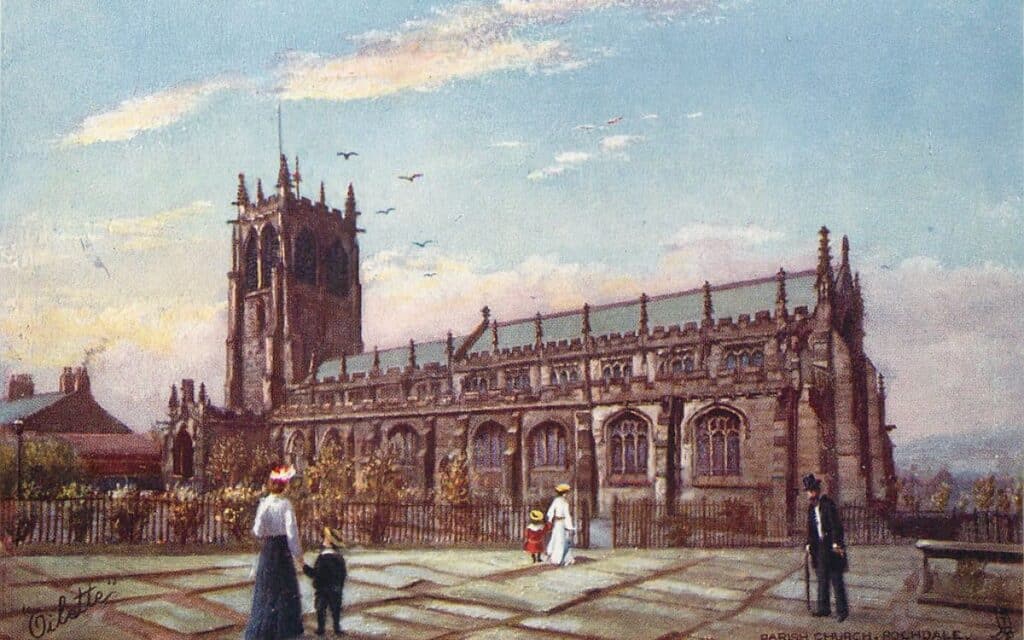The Wishing Well of Rochdale became a mystical centre of folklore, rituals, and rumours of witchcraft, writes GEMMA JOHNSON

Water is a key element for life, forming a vital part of our ecosystem and covering much of the Earth’s surface.
Beyond this, sources of water, such as lakes, streams, ponds and the sea, have become places for people to connect, explore, and share stories.
The Wishing Well of Rochdale tells the story of how a small body of water became a key part of the community, inspiring folklore and even rumours of occult connections.
In the centre of Rochdale sits St Chad’s Church, perched on a hilltop overlooking the town below. The church has always been a focal point of the town centre. A set of stone steps leads down from the church onto Packer Street. At the bottom of these steps was ‘The Wishing Well’, first documented as a source of ‘water worship’ in 1660, but believed to date back hundreds of years earlier.
Over time, the well’s name changed several times, becoming more commonly known as ‘Packer Spout’. Despite the change in name, its mystical attraction remained.
The purity of the water was what initially drew people to the well, which was famed for being crystal clear, unlike the murky waters of the surrounding canals and waterways. The clarity of the water gave it a glass-like appearance, and it soon became used in fortune-telling ceremonies. Young maidens would visit the wishing well with straws and pins. They shaped the straws into a cross using the pins, then dropped them into the water. The bubbles produced were counted, predicting the number of years before they would wed.
Although Catholicism and fortune-telling do not naturally merge, they did at the wishing well. On Palm Sunday, after mass, people would attend the fountain with their palms shaped into a cross. The cross would be dropped into the well; if it floated, the person would have another year of life. If it sank, they could expect to die within the next year.
The practice of ‘wishing’ involved a special ritual performed by anyone passing by the fountain. It was common to stand in silence for a few moments before the well, then throw a slightly crooked pin into the water while making a wish. Throughout the day, the number of pins in the well would grow, but by morning they were often all gone. Locals believed this was a sign their wish would be granted.
But all was not as it seemed.
The disappearance of the pins was down to an old lady named Betty Blomley, rumoured to be a witch. Betty lived in a small cottage near the steps, in an area known as The Gank. She would visit the well at dusk, pretending to collect water, but she was actually removing the pins. The ones that could be straightened were sold on, providing money for her family.
Betty’s appearance was unkempt; she had wild hair, a stooped posture, and travelled around the countryside selling her wares. Children were scared of her, and animals scattered when she approached. Slowly, people began to catch on to Betty’s activities, and fewer pins were left at the well. However, it remained a place where people gathered to tell stories of fairies, sorrow, joy, and folklore.
Water still holds a magical, mystical connection, and the rituals surrounding it continue. I know I will now think of Betty next time I throw a penny into a fountain.
What did you think of this article about the Wishing Well of Rochdale? Have you experienced any local folklore or unusual rituals at other historic sites? Tell us about it in the comments section!







